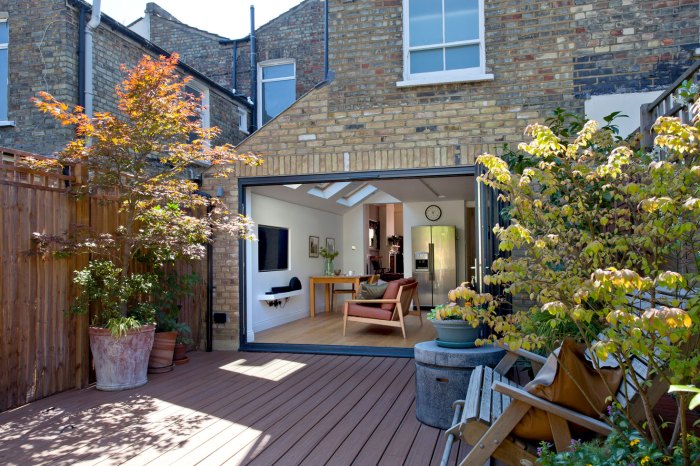Roof extension ideas are taking center stage in the world of home improvement, offering homeowners a chance to expand their living space and add architectural interest to their properties. From sleek flat roofs to charming dormer extensions, the possibilities are endless.
Let’s dive into a comprehensive guide that will inspire you to create a stunning roof extension that perfectly complements your home’s style.
As we delve into the realm of roof extension ideas, we’ll explore various design considerations, materials, structural requirements, and glazing options. We’ll also shed light on insulation and energy efficiency, ventilation and lighting, building regulations, and cost considerations. Along the way, we’ll showcase successful case studies to demonstrate how roof extensions can transform homes into architectural masterpieces.
Roof Extension Types

Expanding your home’s living space doesn’t have to mean moving out. A roof extension can transform your home, adding valuable square footage and creating a brighter, more spacious feel.
There are several types of roof extensions to choose from, each with its advantages and disadvantages. Here’s a comprehensive guide to help you make an informed decision:
Flat Roof Extension
- Advantages:Simpler to construct, cost-effective, suitable for modern architectural styles.
- Disadvantages:Limited headroom, potential for water pooling, requires additional insulation.
Pitched Roof Extension
- Advantages:Provides more headroom, traditional aesthetic, can incorporate windows for natural light.
- Disadvantages:More complex to build, may require planning permission, can be more expensive.
Dormer Roof Extension
- Advantages:Creates additional space and headroom, allows for windows, suitable for period properties.
- Disadvantages:Can disrupt the roofline, may require structural reinforcement, can be more expensive.
Mansard Roof Extension
- Advantages:Creates two levels of living space, provides maximum headroom, distinctive architectural feature.
- Disadvantages:Complex and expensive to construct, may require planning permission, can be more difficult to maintain.
Design Considerations
Designing a roof extension requires careful consideration of various factors to ensure it seamlessly blends with the existing structure and enhances its functionality.
Key elements to consider include architectural style, roof pitch, available space, and local building regulations. The goal is to create an extension that complements the existing home while maximizing space and functionality.
Architectural Style
The architectural style of the existing home should guide the design of the roof extension. Matching the extension’s style to the main house creates a cohesive and aesthetically pleasing appearance. For instance, a traditional home with a gabled roof would benefit from an extension with a similar roofline, while a modern home with a flat roof might opt for a flat-roofed extension.
Roof Pitch
The roof pitch refers to the angle of the roof’s slope. It influences the height and shape of the extension and can impact factors like drainage and natural light. A steeper roof pitch provides better drainage but reduces headroom, while a lower pitch offers more space but may require additional support.
Available Space, Roof extension ideas
The available space for the extension is crucial. Consider the size of the existing home, the desired extension size, and any potential constraints, such as neighboring properties or easements. Careful planning is necessary to maximize space utilization without compromising the functionality of the extension or the overall aesthetic of the property.
Examples of Aesthetically Pleasing Roof Extension Designs
Numerous design options can create aesthetically pleasing roof extensions. Some popular examples include:
- Gabled extensions:These classic extensions feature a triangular roofline that complements traditional homes. They provide ample headroom and can be used for various purposes, such as additional bedrooms or living spaces.
- Dormer extensions:Dormers are vertical extensions that protrude from the roof, creating additional space and natural light. They are ideal for creating additional rooms or expanding existing ones.
- Flat-roof extensions:Modern homes often feature flat-roof extensions, which provide a contemporary and sleek look. They offer versatility in design and can be used for various purposes, including roof terraces or additional living areas.
Materials and Finishes: Roof Extension Ideas
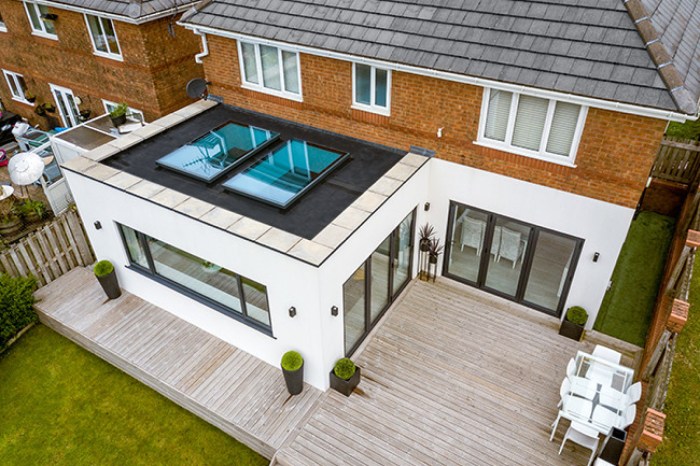
When selecting materials and finishes for your roof extension, consider factors such as durability, aesthetics, and cost.
Roofing Materials
- Tiles:Traditional and durable, available in various styles and colors.
- Slates:Natural stone with a long lifespan and a classic look.
- Metal:Lightweight and durable, comes in different finishes and colors.
Finishes
- Paint:A cost-effective option for changing the color of your roof.
- Coatings:Provide protection from the elements and enhance the durability of your roof.
- Cladding:Covers the exterior of your roof, offering insulation and aesthetic appeal.
Structural Requirements
Roof extensions require careful consideration of structural requirements to ensure the stability and safety of the extended structure. These considerations include assessing the load-bearing capacity of the existing roof and providing adequate reinforcement to support the additional weight.
The choice of support system depends on factors such as the size and shape of the extension, the materials used, and the existing roof structure. Common methods include trusses, rafters, and beams:
Trusses
- Trusses are prefabricated, triangular-shaped structures that distribute weight efficiently across multiple points.
- They are lightweight and easy to install, making them a popular choice for roof extensions.
Rafters
- Rafters are individual beams that run from the ridge of the roof to the eaves.
- They support the roof decking and provide stability to the roof structure.
Beams
- Beams are horizontal members that span across the width of the roof extension.
- They provide additional support to the rafters and trusses, ensuring the structural integrity of the extension.
Glazing Options
Glazing plays a pivotal role in illuminating roof extensions, connecting them with the outdoors, and enhancing the overall aesthetic appeal. Let’s explore the diverse glazing options available, weighing their benefits and drawbacks to make informed choices for your extension.
The type of glazing you choose will significantly impact the amount of natural light, ventilation, and thermal performance of your roof extension. Here’s an overview of the most common glazing options:
Skylights
- Provide ample natural light, making spaces feel brighter and more spacious.
- Can be fixed or operable, allowing for ventilation and temperature control.
- Available in various shapes and sizes, offering design flexibility.
Windows
- Offer panoramic views and a seamless connection to the outdoors.
- Provide natural light and ventilation, improving indoor air quality.
- Can be customized in terms of size, shape, and opening mechanisms.
Glazed Walls
- Create a dramatic visual impact, blurring the boundaries between indoors and out.
- Maximize natural light and provide unobstructed views.
- Require careful consideration of structural support and energy efficiency.
Insulation and Energy Efficiency
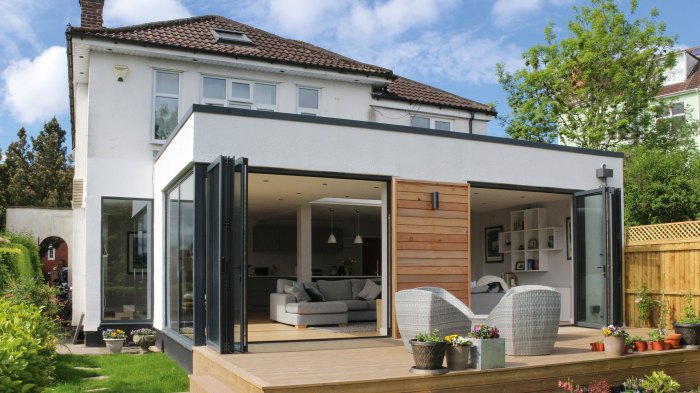
Insulation plays a pivotal role in roof extensions, maximizing energy efficiency and maintaining a comfortable indoor climate. It prevents heat loss in winter and keeps the space cool during summer. Proper insulation also reduces noise pollution and improves overall comfort.
Choosing Insulation Materials and Techniques
Selecting the right insulation materials and techniques is crucial. Consider factors such as thermal conductivity, fire resistance, moisture resistance, and ease of installation. Common insulation materials include fiberglass, cellulose, spray foam, and mineral wool. Each material has its unique properties and suitability for different roof extension designs.
Professional guidance is recommended to determine the optimal insulation solution for your specific project.
Ventilation and Lighting
Proper ventilation is essential in roof extensions to prevent condensation, mold growth, and ensure a healthy indoor environment.
- Natural ventilation:Utilize skylights, roof vents, and windows to promote airflow and allow natural light to enter.
- Mechanical ventilation:Consider installing exhaust fans or air conditioning units to supplement natural ventilation.
Lighting
Maximize natural light with skylights and windows. Artificial lighting options include recessed lights, pendant lights, and track lighting. Choose energy-efficient LED bulbs to minimize energy consumption.
Building Regulations and Planning Permission
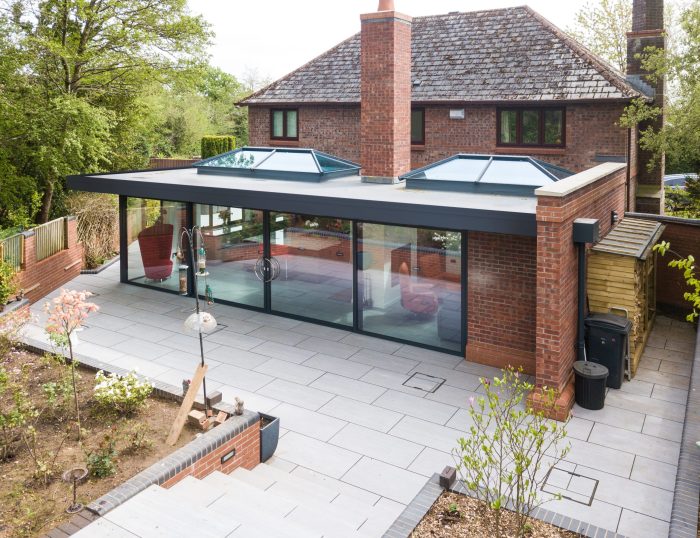
Before embarking on a roof extension project, it is crucial to understand the relevant building regulations and planning permission requirements. These regulations ensure the safety, structural integrity, and aesthetic compatibility of the extension with the existing building and the surrounding environment.
Obtaining the necessary approvals involves submitting detailed plans and specifications to the local authority for review. The plans should clearly illustrate the design, materials, and construction methods to be employed. The local authority will assess the proposal against the relevant building regulations and planning policies to determine whether it complies with the required standards.
Planning Permission
Planning permission is typically required for roof extensions that involve significant changes to the external appearance of the building or that exceed certain size limits. The local authority will consider factors such as the scale, design, and impact on the character and appearance of the surrounding area when making a decision.
Building Regulations
Building regulations set out the minimum standards for the design and construction of buildings to ensure safety, health, and energy efficiency. For roof extensions, these regulations cover aspects such as structural stability, fire safety, thermal insulation, and ventilation.
Cost Considerations
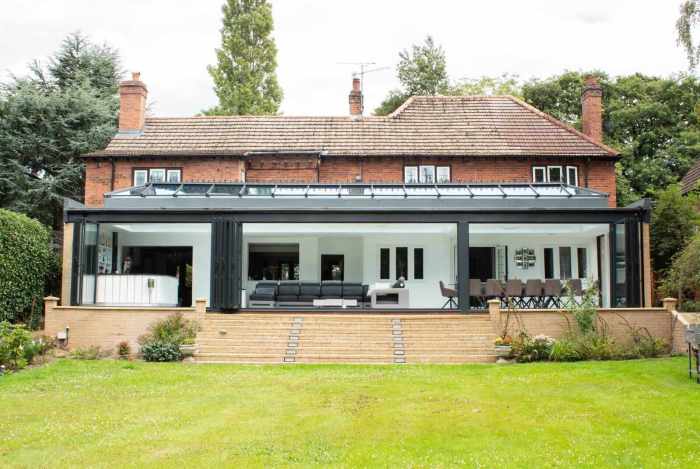
When planning a roof extension, it’s crucial to consider the financial implications. The cost can vary significantly depending on several factors, including:
- Size and complexity of the extension
- Materials used
- Labor costs
- Location
- Building regulations and planning permission requirements
As a general guide, the cost of a roof extension can range from £1,500 to £3,000 per square meter. However, it’s important to obtain detailed quotes from reputable contractors to determine the exact cost for your specific project.
Case Studies
Real-world examples of successful roof extension projects can provide valuable insights into the design, construction, and materials used. Here are some notable case studies:
Case Study 1: Victorian Terrace Roof Extension
This project involved extending the roof of a Victorian terrace house to create an additional bedroom and bathroom. The extension was designed to complement the existing architecture, using traditional materials such as brick and slate. The result is a seamless integration that enhances the functionality and aesthetic appeal of the property.
Case Study 2: Contemporary Loft Conversion
In this project, a loft space was converted into a modern and spacious living area. The extension featured large windows that flood the space with natural light. Sustainable materials, such as recycled timber and insulation, were used to create a comfortable and energy-efficient living environment.
Case Study 3: Bungalow Dormer Extension
This case study showcases a dormer extension added to a bungalow. The extension provided additional headroom and floor space, creating a more comfortable and spacious living area. The dormer was designed to blend seamlessly with the existing roofline, maintaining the bungalow’s character.
Closing Notes
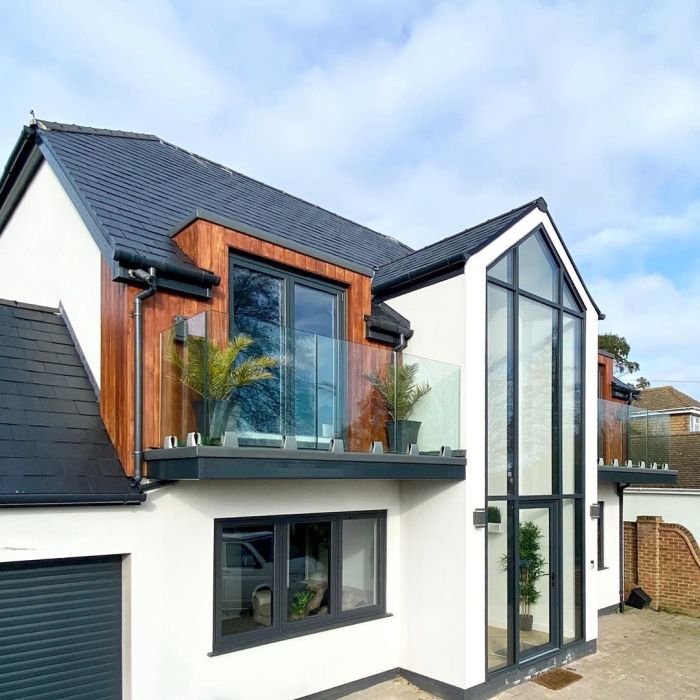
Whether you’re seeking to add an extra bedroom, create a spacious home office, or simply enhance your home’s aesthetics, roof extension ideas provide a wealth of options. By carefully considering the factors Artikeld in this guide, you can design and build a roof extension that seamlessly blends with your home’s existing structure and elevates its overall appeal.
Embrace the potential of roof extensions and embark on a journey to create a home that truly reflects your unique style and aspirations.
Commonly Asked Questions
What are the different types of roof extensions?
There are various types of roof extensions, including flat, pitched, dormer, mansard, and lean-to extensions. Each type offers unique advantages and disadvantages, so it’s important to consider your specific needs and preferences.
How do I choose the right materials for my roof extension?
The choice of materials for your roof extension depends on factors such as durability, aesthetics, and cost. Common materials include tiles, slates, metal, and cladding. Consider the overall style of your home and the desired outcome to make an informed decision.
What are the structural considerations for a roof extension?
Structural considerations are crucial for ensuring the stability and safety of your roof extension. Factors to consider include load-bearing capacity, reinforcement, and the use of trusses, rafters, and beams. A qualified structural engineer can provide guidance on the necessary structural elements.
